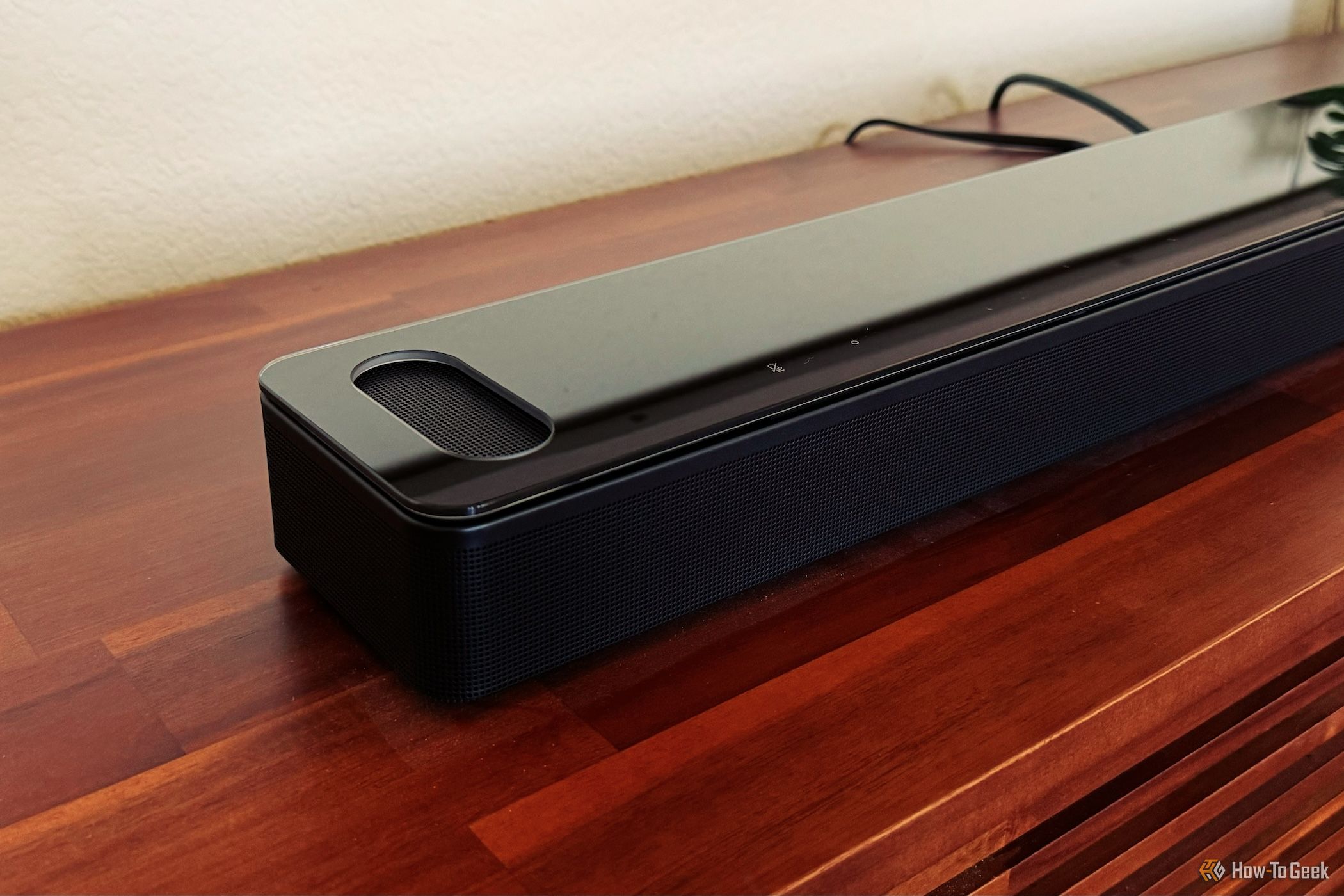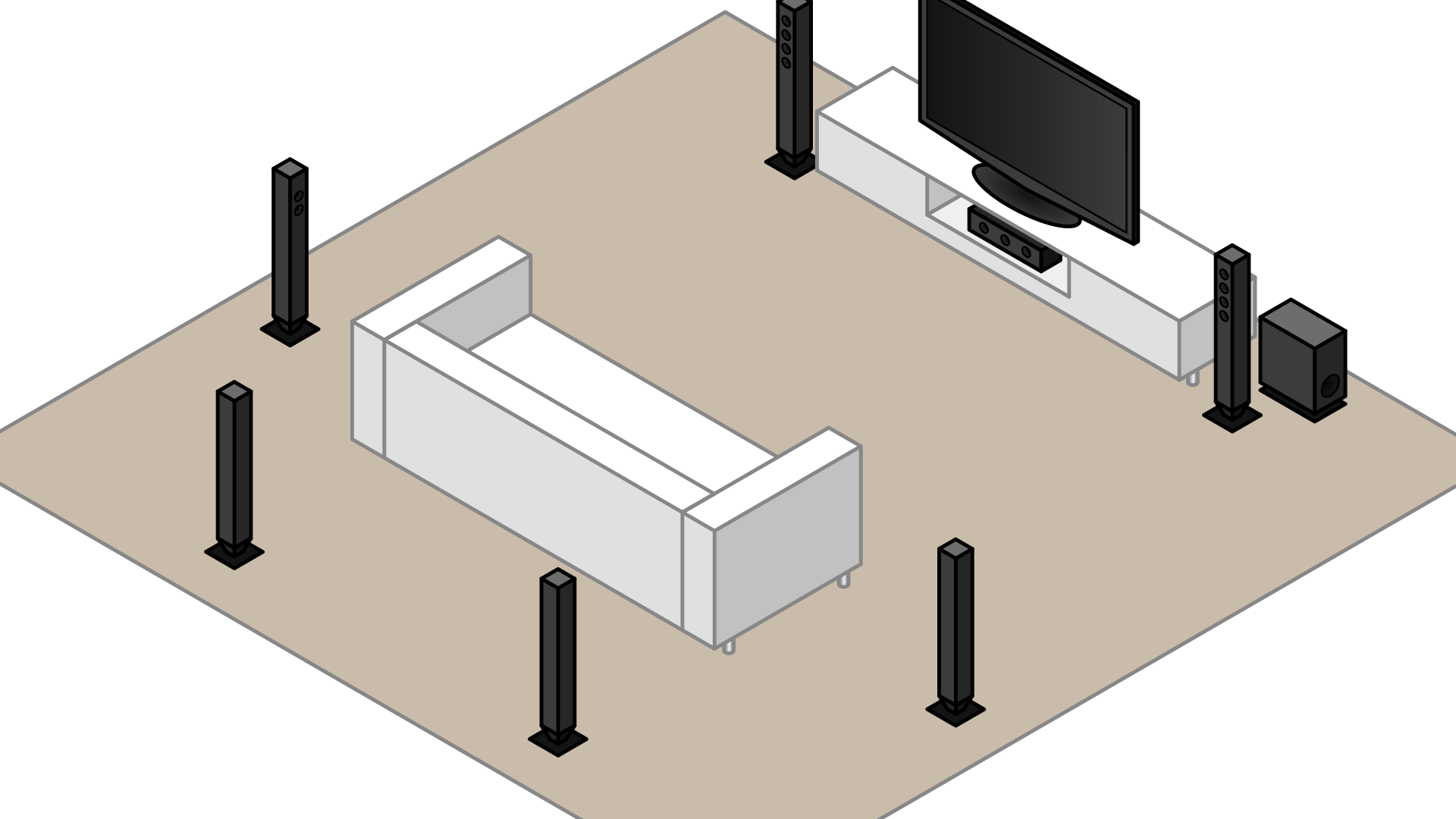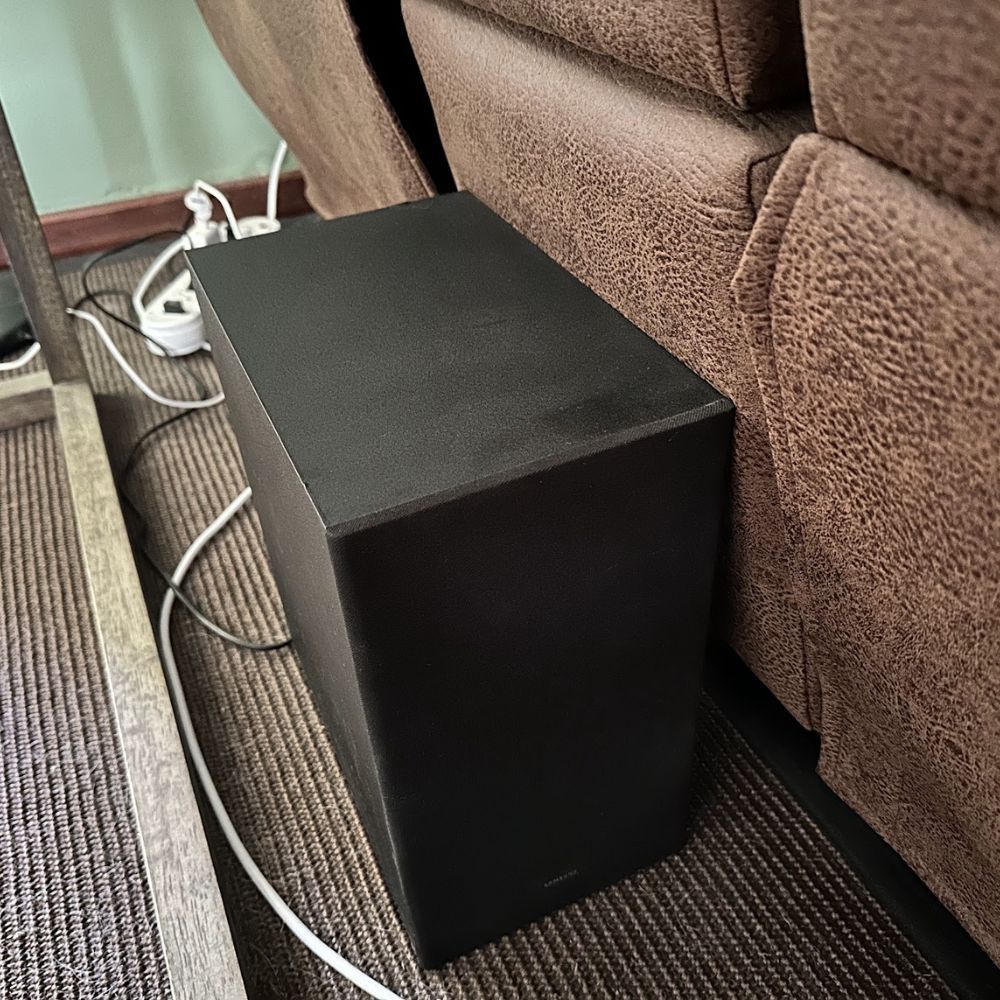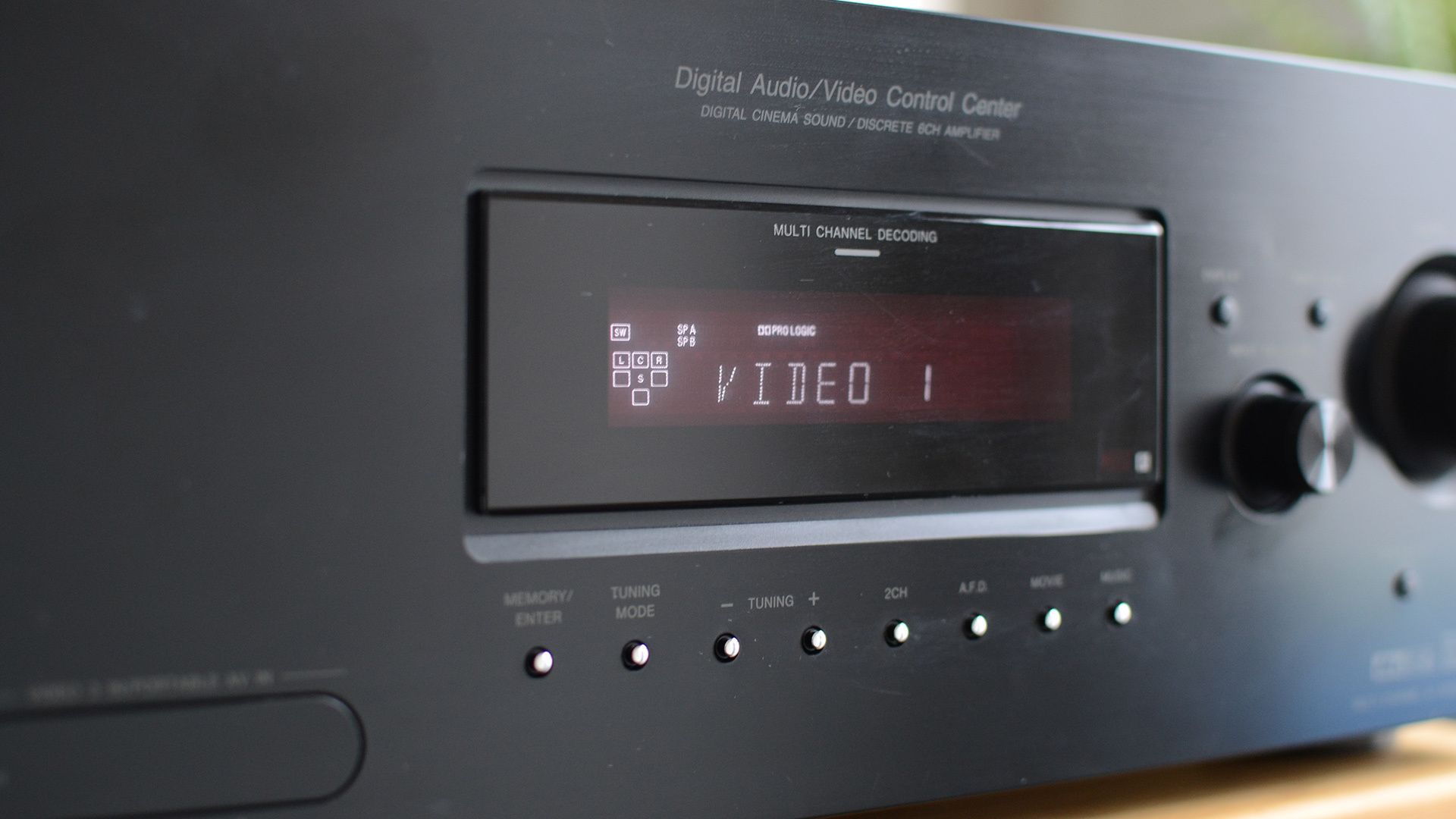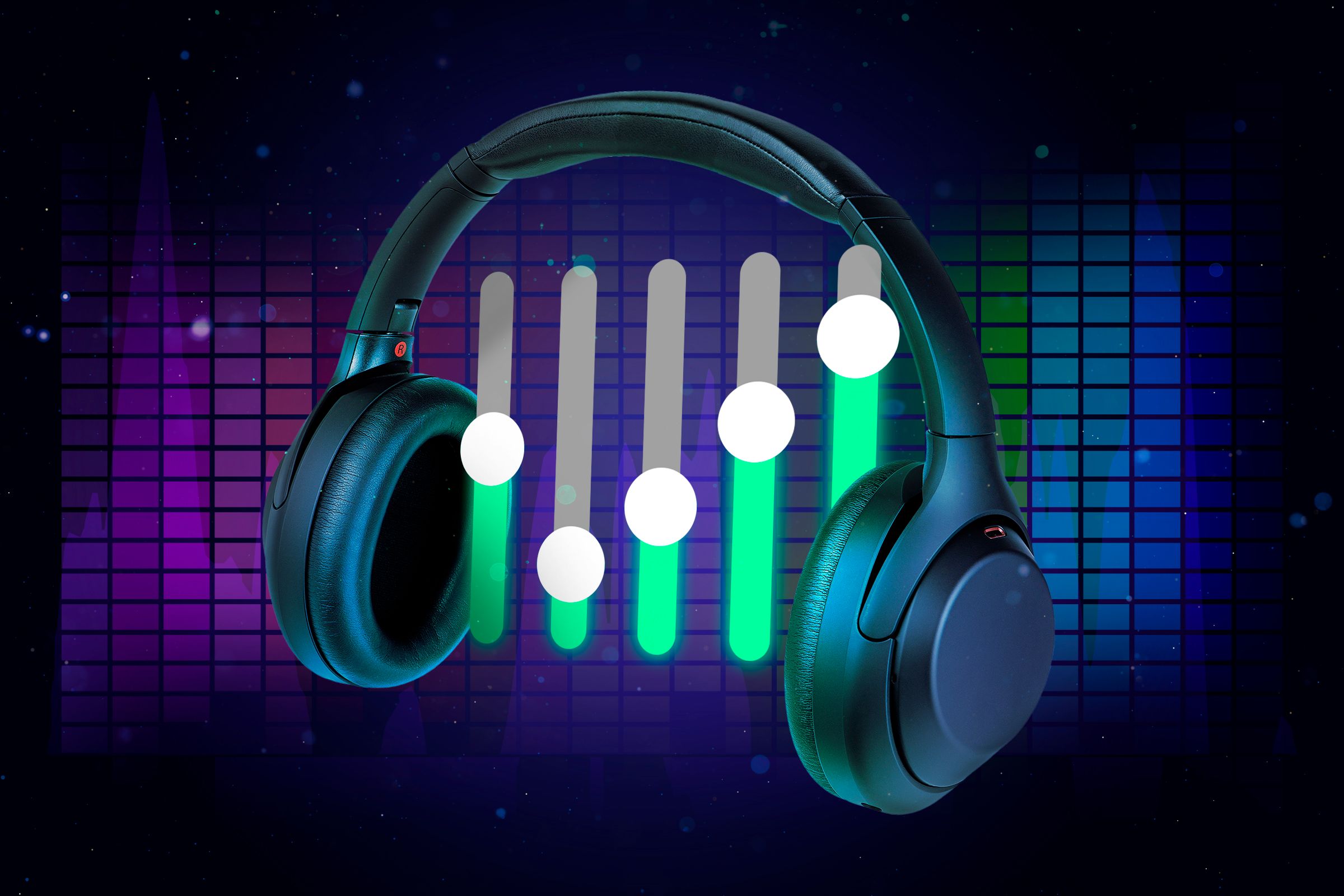So you’re new to the whole home theater thing, and you’re not sure what all the terms mean. Well, these are some of the most important concepts you should know, so time to get your learn on.
These terms are in order of what I thought was related, instead of alphabetical.
Channels
This refers to the number of audio channels. Each channel is its own independent audio stream. Stereo audio has two channels of audio, for example. Mono audio has just one. Stereo is the most common setup in general, but big multichannel systems are at the top of the pile when it comes to immersion and more common for home theater systems. Sometimes you’ll see a decimal point in audio channel numbers, such as “2.1,” which means there are two audio channels, and one dedicated subwoofer speaker.
Surround Sound
Surround sound systems have many channels, typically five or seven, arranged around the listener to create an immersive experience where you can hear where things are coming from with high precision. Of course, the media you’re watching must be mastered for surround sound to take full advantage of a setup like this.
Dolby Atmos
Atmos is a surround sound mastering standard that’s mainly known for adding height channels, which means having speakers on the ceiling (or upward-firing floor speakers that bounds off the ceiling) that let you hear things going overhead, or coming from above. It supports up to 128 audio channels when mastering, depending on the implementation, and can map virtual sound “objects” to specific positions within 3D space using those height channel speakers. Of course, to take full advantage of Atmos, you need some pretty elaborate gear.
DTS
DTS or Digital Theater System is a competitor to Dolby, and there have been various DTS codecs over the years. If you check the back of a DVD or Blu Ray, you’ll usually see which DTS version its mastered for, but as long as your audio system supports DTS you should hear something come out of your speakers. DTS is widely used and supported.
THX Certification
This is a certification from Lucasfilm that means a given piece of gear complies with their strict criteria for audio reproduction. You’ve probably seen the THX logo and booming, sweeping intro sound before. Gear with a THX sticker carries a premium. However, just because something lacks this certification, doesn’t make it worse than THX-certified gear!
Subwoofer
This is the big boom-boom speaker that’s specially designed for low-frequency sound. I like putting mine against my movie couch. Some surround sound systems even come with two subwoofers.
Soundstage
This is the spatial arrangement of what you perceive when listening to something. For example, in orchestral music, your brain might hear how the different instruments are arranged from the point of view of the microphone.
Frequency Response
This is the range of audio frequencies a speaker can produce measured in Hz (Hertz). Human hearing typically falls between 20Hz and 20KHz. The wider the frequency response range, the more accurate and true the sound reproduction is compared to the original recording. So wider is generally better.
Crossover
A crossover is an electronic device (or a software function) that determines at which frequencies sound should be sent to different speakers. For example, if you have a speaker cabinet with a tweeter, midrange speaker, and subwoofer, the crossover will only send frequencies to each speaker that it’s best suited for. By giving each speaker the optimum range of frequencies, you’ll get better, fuller, and well-separated sound.
Speaker Sensitivity
This is a speaker specification measured in dB (decibels), and is measured one meter away from a speaker receiving one Watt of power. So a sensitivity of 90dB means it produces 90dB of sound pressure using one watt of power from the amplifier. Remember that for every 3dB increase you get double the pressure, since dB is not on a linear scale.
Sensitivity is useful for a number of things, such as figuring out how loud a given speaker can get paired with a specific amp. It’s also useful to ensure that if you’re connecting multiple speakers to one amp, that some aren’t a lot louder at the same amplification levels.
Alteratively, if you have a setup where every speaker isn’t the same distance from you, you can compensate for the loss of volume by using speakers that are more sensitive, and then by the time the sound arrives at your ears, the volume levels are the same as the speakers closer to you. As you can see, this is a pretty useful number!
Impedance
This is the amount of electrical resistance a speaker has to the power coming from an amplifier. Impedance is an important, and rather deep subject in audio, so I suggest you check our in-depth impedance explainer.
Amplifier
This is a device that takes a low-power audio signal, and then amplifies it using electrical power so that it can physically move the cone of a large speaker. Amp power is measured in Watts, and the wattage of an amp should not exceed the peak wattage specification of any speaker you connect to.
Receiver
This is the central hub of a home theater system that processes audio and video signals, amplifies them, and routes them to the appropriate outputs. Receivers are a big deal in home theater circles, and they are the foundation of enthusiast setups.
Acoustic Treatment
The room that you put your home theater setup in has a huge influence on how it sounds. Acoustic treatment refers to the set of modifications and tricks that can be used to get rid of unwanted effects on audio, such as room reverberation. Typically, this involved adding strategic acoustic panels.
Room Calibration
If acoustic treatment is about adapting your room to your home theater system, room calibration is about changing the settings of your home theater, to optimize it for your room. For example, you may want to boost the volume of faraway rear channels or otherwise tweak spatial audio for the unique shape of your room.
Speaker Placement
Choosing where to put the speakers in your sound system is both an art and a science. Getting speaker placement just right is the difference between magical immersive audio, and a muddy mess.
Equalization (EQ)
The equalizer in an audio system, whether physical or virtual, alters which frequencies in the audio you want to emphasize or de-emphasize. Adjusting an EQ can seem tricky, but it’s usually just a matter of using your ears until the music or other content sounds the way you prefer.
Dynamic Range
Dynamic range refers to the difference between the quietest and loudest parts of the audio. In regard to recordings, this is the range of volumes that can be captured, and related to audio systems, it’s the range that can be reproduced. Human hearing has a dynamic range of around 120dB in deal conditions, but anything over 90dB can cause hearing damage if sustained. Typically, high quality modern recordings can capture 96dB of dynamic range, but up to 144dB isn’t unheard of.
Just because that range can be captures doesn’t mean sounds over 90dB are reproduced at that volume. The whole range can be shifted up or down, which is what you do whenever you adjust the volume but the relative size of the range remains the same.
Audio Codec
An audio codec or “coder-decoder” is a compression algorithm that transforms an audio recording so that it takes up less space, but tries to retain as much of the original quality as possible. As codecs and computer processing power have advanced, the quality and compression ratios have improved immensely.
Bitrate
This is the amount of data in an audio stream processed per second, measured in bits. E.g. 128kbps. Generally, higher bitrates mean better quality, but only when compared within the same codec. Newer codecs might offer higher quality with lower bitrates than older codecs.
Sampling Rate
In a digital recording, the sample rate is the frequency with which a sound wave is measured and recorded, as opposed to analogue recordings, which are continuous. The higher the sample rate, the more true the sound reproduction will be. CD audio is sampled at 44.1KHz, but these days 48KHz is common for high quality audio.
Lossless Audio
Lossless audio has been compressed using a lossless codec such as FLAC without losing any of the original audio recording information. Even things humans can’t hear. Whether this makes any difference compared to “lossy” high-quality codecs is one you’ll have to answer using your own ears.
That’s a lot of terms to learn. Hopefully, this will give you a good start, but there are plenty of great home theater articles by our couch potato writers to give you more in-depth explanations of these key concepts.


